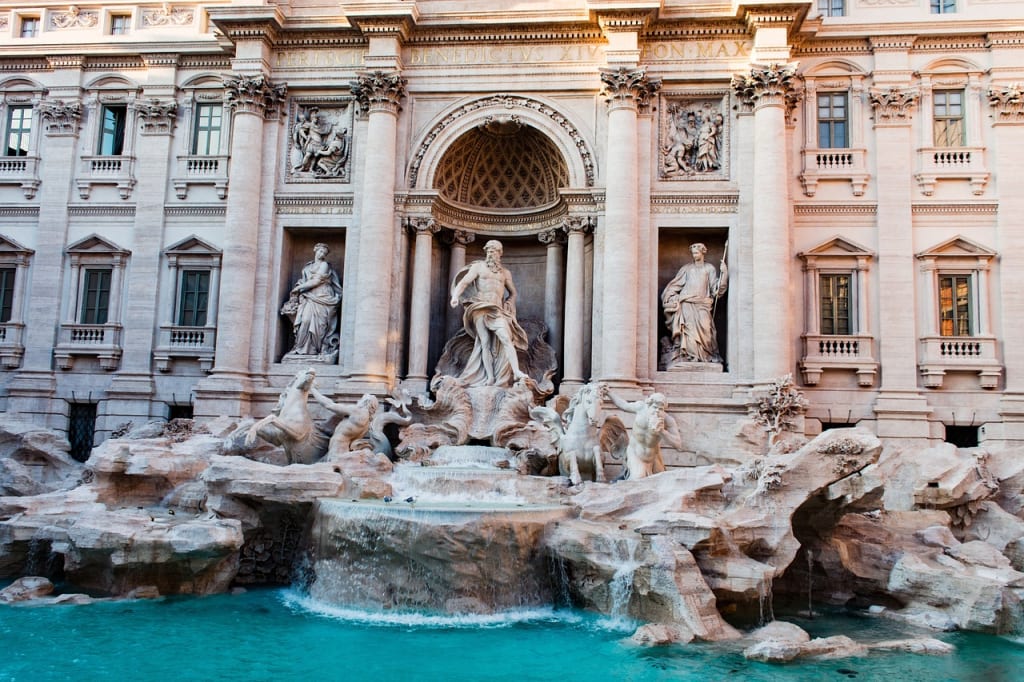
- [Narrator] The story of ancient Rome is a story of evolution, and the world's ability to adapt and survive for over 1,000 years. Rome began as a small village on the Tiber River in central Italy. Over the next few centuries, the country grew into an empire stretching from the North Pacific to the Persian Gulf. During this transition, Rome demonstrated political, military, and cultural power that became a great power and helped shape the Western world. The history of ancient Rome can be divided into three main periods: the imperial period, the republican period, and the imperial period. During the Imperial period, Rome was a monarchy, ruled by seven kings. According to legend, the first king of Rome was a man named Romulus. He and his twin brother Remus are said to have founded Rome in 753 BC. In 509 BC, Rome adopted a republican form of government, in which the country was governed by two annual representatives, known as orators and later orators. One of them was the famous general and diplomat Julius Caesar. Next is the Imperial period. It was marked by the rise of the Roman Empire and famous leaders such as Octavian, the first Roman emperor, who came to the throne in peacetime, and Nero, who was made the some scholars are the most corrupt emperors of Rome. Rome's importance and pride in its soldiers was essential to the development of its world, a need that was evident from the beginning of the Empire when Rome was a small village. Despite this, Rome conquered its neighboring countries. In the end, this rapid growth reached the Roman rule in the Italian peninsula and the entire Mediterranean, where they conquered Greece, Egypt and Carthage. Later Rome helped the military conquer territories as far as England and Iraq. The sheer size and growing population required advances in Roman technology. Aqueducts were built, increasing people's access to water, helping to improve public health and paving the way for the famous Roman baths. A 50,000 mile road system was also built. Although originally designed for the military, it facilitated the movement of people and ideas throughout the empire. The spread of ideas and increased contact with different cultures allowed other aspects of Roman culture to develop. The key to Rome's success and longevity was the empire's acceptance of the cultures of the regions it conquered. Rome received Latin from the neighboring country of Latium, where it became the official language of the kingdom and the ancestor of the Romance languages of Europe. The Romans also absorbed the culture of the ancient Etruscan states, including religion, the alphabet, and aspects of gladiatorial combat. However, no other nation was as powerful as the ancient Greeks. Their influence can be seen in Roman art and architecture. The Roman upper class commissioned paintings and statues modeled after Greek art. Greek architectural styles, such as columns, were used in Roman buildings such as the Pantheon and the Colosseum. The rise of Christianity was a cultural change that had great influence throughout the empire. This religion originated in the Middle East and received strong support from Constantine I, the first Roman emperor to convert to Christianity. He transformed Rome into a Christian state and encouraged the spread of the religion throughout Europe. In the fourth century, the Roman Empire fell after more than a thousand years of existence. Factors such as political corruption, economic crises, and class wars caused empires to collapse from within, while invasion and other military threats caused empires to collapse from without. Rome's ability to unite diverse cultures, dominate its rivals, and tailor its political system to the needs of its people is a lesson to be learned forever.
About the Creator
Rowan Sharkawy
someone who love to know anything & share it with every one
welcome to my profile






Comments
There are no comments for this story
Be the first to respond and start the conversation.